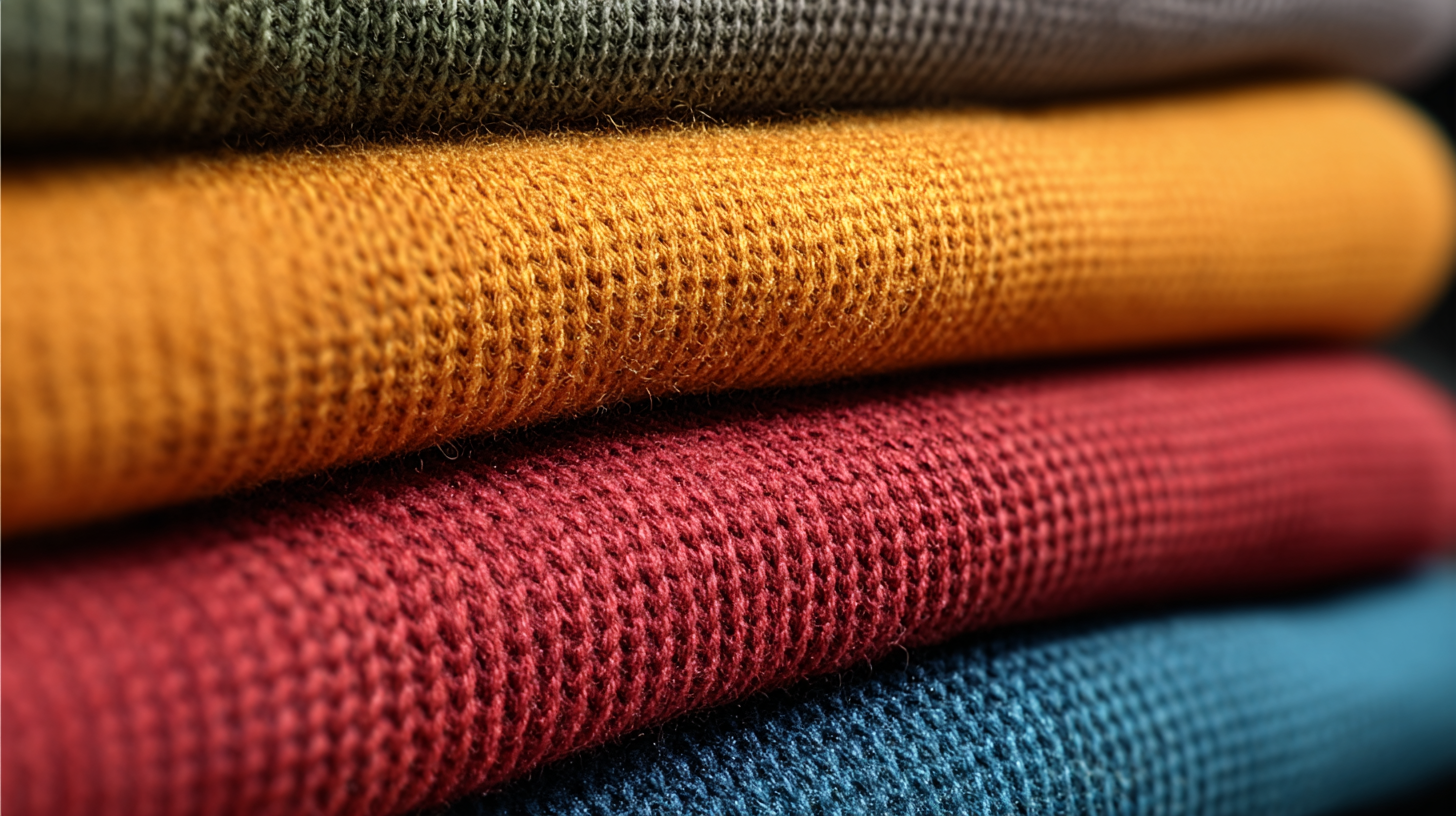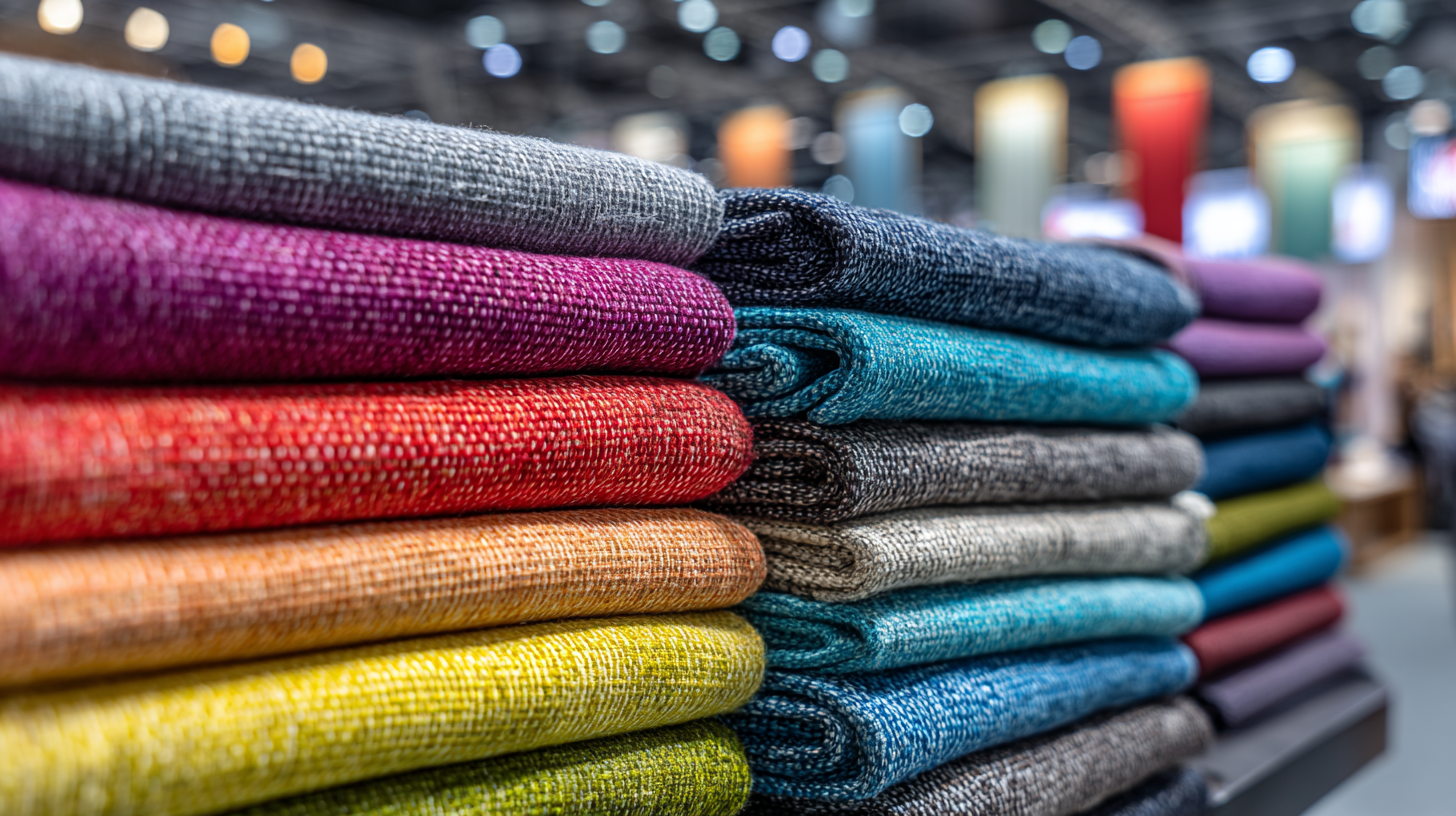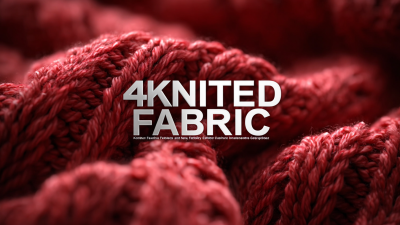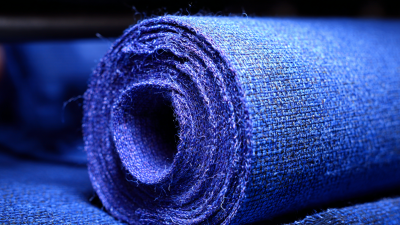As the global textile industry continues to evolve, the innovative realm of knitted fabric plays a pivotal role in shaping market trends, particularly in the context of the upcoming 2025 China Import and Export Fair. Recent industry reports indicate that the global knitted fabric market is expected to reach a valuation of approximately USD 52 billion by 2025, driven by increasing consumer demand for versatile, comfortable, and sustainable clothing options. Notably, China remains the largest producer and exporter of knitted fabrics, accounting for about 30% of global production, underscoring its significance in the international textile landscape. Furthermore, emerging trends such as smart textiles and eco-friendly materials are expected to dominate discussions at the fair, making it a crucial platform for stakeholders to explore the latest innovations and market opportunities within the knitted fabric sector. As we approach this prestigious event, the exploration of these trends will undoubtedly highlight the dynamic and transformative nature of knitted fabric in the industry.

As we approach the 2025 China Import and Export Fair, innovations in knitted fabric technology are set to lead the way in the evolving textile landscape. The demand for sustainable fashion is becoming more pronounced, which has prompted a number of breakthroughs in the knitting sector. Technologies focusing on recycling textile waste and utilizing eco-friendly by-products are emerging as frontrunners in the quest for sustainability. For instance, recent discussions at the Future Fabrics Expo highlighted progressive approaches in textile-to-textile recycling that not only reduce waste but also enhance the quality of the final product.
Tips for Staying Ahead in Knitted Fabric Trends:
At the 2025 China Import and Export Fair, the focus on sustainable practices in knitted fabric production reflects a growing global consciousness about environmental conservation and ethical manufacturing. Many exhibitors showcased innovative techniques that minimize waste and reduce carbon footprints, aligning with consumer demand for eco-friendly products. For instance, brands presented knitted fabrics made from organic and recycled fibers, emphasizing the importance of responsible sourcing. This trend not only caters to environmentally-aware consumers but also sets a benchmark for industry standards.
In addition to material choices, the fair highlighted technologies that enhance sustainability in the production process. Machine innovations aimed at reducing energy consumption and water usage were prominently featured. By integrating smart technologies, manufacturers are able to track resource utilization and make adjustments that promote efficiency. Workshops and panels at the fair further engaged participants in discussions about circular economy practices, encouraging collaboration among industry players to advance a more sustainable future in knitted fabric production.
At the 2025 China Import and Export Fair, the spotlight is set to shine on emerging designer brands that are revolutionizing the knitted fabric market. With a wave of innovation and creativity, these designers are pushing the boundaries of traditional knitting techniques and introducing sustainable practices in their production lines. Expect to see a diverse range of textures, colors, and patterns that not only appeal to aesthetic sensibilities but also cater to the rising demand for eco-friendly materials.

Tips: When exploring knitted fabric trends, consider focusing on versatility. Look for pieces that can transition seamlessly from casual to formal settings. Additionally, pay attention to the stitching patterns; intricate designs often add value and uniqueness to garments. Engaging with these emerging brands will not only support budding designers but also help you stay ahead in fashion trends.
Many of these designers emphasize their commitment to sustainability, using organic fibers and eco-conscious processing techniques. This shift towards responsible fashion highlights a growing awareness among consumers about the environmental impact of textile production. By integrating styles that prioritize ethical practices, these brands are not just innovative but are setting the tone for a more sustainable future in the fashion industry.
As we delve into the knitted fabric trends showcased at the 2025 China Import and Export Fair, color and pattern innovations play a pivotal role in defining upcoming seasonal styles. According to the latest industry report from Textile Intelligence, vibrant shades like emerald green and deep cerulean are forecasted to dominate the knitted fabric market. These colors not only resonate with consumer preferences for sustainability but also provide a striking visual appeal that aligns with both fashion and functional apparel.
In terms of patterns, a notable rise in geometric and nature-inspired designs has been observed. The Global Textile Report indicates that 68% of consumers are leaning toward products that incorporate natural elements, reflecting a trend towards authenticity and connection with the environment. Designers are encouraged to experiment with varying textures and layering techniques to enhance the tactile experience of knitted fabrics, making them even more desirable.
Tip: When selecting knitted fabrics, consider the sustainability credentials of the materials used. Opting for organic fibers not only supports eco-friendly practices but also appeals to a growing demographic of environmentally conscious consumers. Additionally, incorporating versatile patterns can help extend the lifecycle of knitted garments, encouraging repeat purchasing.
The knitted fabric market in China is witnessing significant evolution as consumer preferences shift, particularly in light of upcoming events such as the 2025 China Import and Export Fair. According to market insights, knitted fabrics have become increasingly favored due to their versatility, comfort, and innovative designs. The global mattress fabric market is expected to grow from $6.12 billion in 2025 to $8.58 billion by 2032, suggesting a rising demand for quality textile solutions which knitted fabrics can fulfill. This trend highlights an opportunity for manufacturers to align their offerings with consumer expectations that are rapidly evolving towards higher quality and sustainability.

Key trends driving the knitted fabric sector include the integration of eco-friendly materials and advanced technologies such as automation and AI in knitting processes. In 2025, we can expect to see innovations that not only enhance fabric performance but also promote sustainable production methods. Reports indicate that the industry's growth will be propelled by the increasing consumer awareness regarding environmental impact and the shift towards more responsible sourcing of textiles. Brands that embrace these trends are likely to resonate more with the modern consumer, thereby gaining a competitive edge in this vibrant market.





